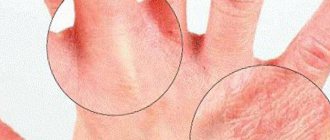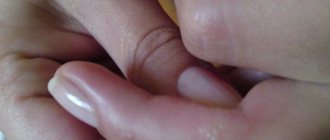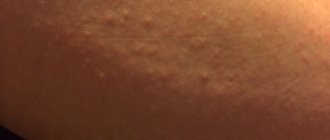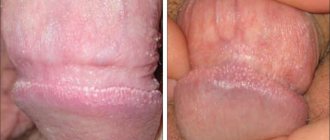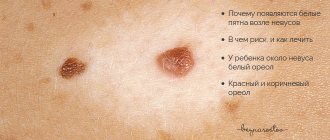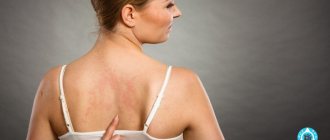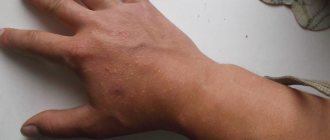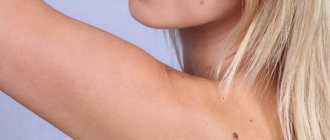Symptoms and causes of rash
When something goes wrong in the body, it signals it through the skin.
It may become dry, change color, or develop a rash. Rashes come in the form of spots, ulcers, blisters and nodules. In medicine, the general name for such symptoms is exanthema. A blistering rash (vesicles) is easy to distinguish from all others: a small bump appears above the surface of the skin, which contains a clear liquid. If there is pus in this tubercle, we are talking about ulcers (pustules), and the spots and nodules are “empty”, but sometimes dense. This symptom appears when there is mechanical damage to the skin, infections, or autoimmune disorders. Pemphigus is one of the dangerous causes of rash that is important to cure. This is a rare autoimmune disease in which the rash occupies large areas of the body, including the mucous membranes. The rash may peel off, with individual vesicles of different sizes merging into a single area. With such symptoms, the patient urgently needs hospitalization. Similar symptoms may occur with psoriasis. Although in this case the patient is not in danger, you need to contact a dermatologist to confirm the diagnosis.
There are also more serious diseases in which blisters also appear on the skin. Another autoimmune disease with blistering rash is bullous pemphigoid. Appears only in elderly people. The vesicles cover only the skin, red spots appear between the pimples, and the exanthema feels thickened to the touch. If the rash is accompanied by symptoms of an eating disorder (bloating, vomiting, diarrhea, etc.), it may be dermatitis herpetiformis. In this case, the rash starts from the elbows and knees, buttocks, and the back of the head.
In addition to the main symptom of vesicular exanthema, there are a number of accompanying symptoms. This could be fever, itching, or lack of appetite. This set of symptoms is determined by the very reason why the rash appeared. The most common causes of blistering rashes on the body:
In addition to these reasons, vesicular rash appears from scratches and cat bites. This is called felinosis; when human skin is damaged, the animal infects the wound with microbes. The first signs appear after 2 weeks; a thickening with a red tint is noticeable at the site of damage. Then a vesicle forms in the same area, the lymph nodes enlarge, and the temperature rises.
What do vesicles look like?
In practice, doctors often encounter watery rashes that look like this:
- Small bubbles or vesicles.
- Large blisters or bullae.
- Bubbles with pus inside or pustules.
Typically, a vesicular rash or dermatitis is the main sign of a dermatological disease affecting the body. The clinical picture of the disease is clear. Bubbles collect in dense areas. Chickenpox in childhood is manifested by frequent accumulation of blisters with fluid inside.
https://www.youtube.com/watch?v=ytaboutru
The emergence process proceeds in the following order:
- The skin located at the site of the lesion becomes red. The patient feels discomfort in this place.
- Dots begin to form on the surface. As it increases, the inflammatory process intensifies.
- Itching appears and gradually becomes unbearable. Depending on what illness caused the blisters, additional symptoms and possibly pain may appear.
- As a result, the rash takes on the appearance of an open wound that grows on the surface and has a destructive effect deep in the skin.
If the appearance of blisters is not associated with an infectious infection, then the vesicles remain red pimples, located tightly to each other, causing itching.
What to do if you have rashes
If the cause of the disease is accurately traced, for example, with allergies or prickly heat, the patient can get rid of the symptoms on his own. For people with allergies, antihistamines should be prescribed by a doctor; after taking the medicine, the signs of the disease disappear. In case of prickly heat, personal hygiene is important; the affected areas of the skin should be treated with mild antiseptics and talcum powder. For prevention, you need to change bed linen every three days, wear clean clothes that do not irritate the skin.
If rashes on the arms, legs or other parts of the body appear suddenly, there is no need to self-treat. An appointment with a dermatologist will take no more than an hour, but the specialist will accurately determine the cause and select a safe treatment. At the appointment you will need to answer the following questions:
If rashes in the form of blisters appear on the genitals, you should definitely visit a dermatovenerologist. If the rash appears periodically and goes away on its own, you need to consult an allergist and dermatologist, in which case it is also important to establish the cause of this phenomenon.
Rashes in the form of blisters in a child often appear due to prickly heat. But you don’t need to classify any rash as prickly heat if you’re not sure. In children, such symptoms can also indicate allergies, autoimmune diseases, and infections. If the vesicles do not disappear after treatment with antiseptics and wound healing agents, you need to visit a pediatrician. If during the rash a fever, diarrhea appears, the child becomes restless or, conversely, constantly sleeps, this is a reason to consult a doctor as soon as possible.
Rashes in the form of blisters on the body appear from external or internal factors. This could be an infection, allergy, or autoimmune disease. In treatment, it is important to establish the exact cause of the rash. Due to the influence of external factors, vesicles appear singly or in a limited area of the body, pass quickly and leave no traces. If these symptoms appear regularly, consult a dermatologist.
More fresh and relevant information about health on our Telegram channel. Subscribe: https://t.me/foodandhealthru
Academic degree: doctor of the highest category, candidate of medical sciences.
Training:
Source
Cream La-Cri for sensitive skin of hands
Whatever the cause of the lesion, the skin suffers in any case. Patients experience increased sensitivity to cosmetics and chemical components, so they are advised to abandon conventional cosmetics and give preference to neutral hygiene products.
Special La-Cri products will help fight inflammation and provide gentle skin care. Instead of regular soap, it is better to switch to a soft cleansing gel that is suitable for the entire body and face. After washing, the skin can be lubricated with anti-inflammatory and softening cream.
The La-Cri skin care series is developed on the basis of natural ingredients (healing oils, panthenol, plant extracts). These products do not contain hormones, dyes, fragrances or parabens, so they can be regularly used by children from the first days of life and by adults with sensitive skin. Such cosmetics will help speed up treatment and restore skin faster.
To prevent relapse, lead a gentle lifestyle. Try to get rid of bad habits, maintain hygiene, avoid contact with chemicals (wear gloves).
Types of watery blisters
Water bubbles on the skin look like round formations that rise above the surface of the skin. Their appearance may be preceded by rashes in the form of large spots or small rashes, redness. The sick person may itch constantly. This is a primary non-strip element that occurs as a result of acute inflammatory edema of the papillary dermis.
They are covered with a transparent film, under which there is liquid, the color ranges from transparent to red. Watery skin blisters can appear on an arm or leg, other parts of the body, or in a small child or adult. Only a dermatologist can determine what kind of disease this is. He takes into account how it all started, how the rash appeared, whether there is itching, and sends for tests.
The following types of such rashes are distinguished:
Only after a comprehensive examination can we say with certainty what kind of disease it is and how to treat it. Read more about what diseases are accompanied by similar symptoms.
Causes of bubbles
Various diseases have similar symptoms, some of them are extremely contagious.
Mechanical damage
This is one of the most common causes of such formations on the skin; they are correctly called blisters or water calluses.
Most often, areas of the body that come into contact with tight clothing and shoes are affected. Then friction of the hard material against the skin occurs, which causes a shift of the upper layer relative to other parts of the dermis. Then a cavity is formed, which is filled with intercellular fluid.
Similar mechanical damage occurs when working with sports equipment - for example, a tennis racket, when doing gardening, peeling vegetables, etc. The thinness of the dermis and the tendency to sweating increases the likelihood of the formation of water calluses.
Viral diseases
Watery rashes on the skin are one of the symptoms of viral diseases. There are quite a lot of them. This:
Parasite infestation
Drankculosis is a parasitic disease that a person becomes infected with after drinking dirty water. The larvae of the parasite settle in the lower extremities, and a characteristic cushion forms on the leg. Blisters appear on the skin, reaching 8 cm in diameter. They burst when exposed to water.
Scabies is a disease in which the skin is attacked by a microscopic mite. Then redness and spots appear on the surface. When these areas are treated with iodine, the passages through which the parasite moves are visible. Blisters form at the scratch site. The hands are mainly affected, especially at the articular joints.
Allergic reactions
Watery blisters on the skin with white transparent liquid inside can appear with urticaria, which is preceded by redness of the skin. If you don’t itch, the small red rash and blisters will clear up in 3-4 days ; complete recovery occurs in a week. But if you constantly comb, crusts will not appear, and the healing process will take longer.
Hives can be on the hands, cheeks, and other parts of the child’s body.
Similar symptoms occur with contact allergies. The provoking factor may be household chemicals, some materials, in particular synthetic ones, and medications. The reaction can occur within 5 minutes of contact with the triggering substance.
Fungal diseases
The dyshidrotic form of the fungus causes rashes that are filled with clear liquid to form between the fingers. Initially they are not visible due to the thickness of the skin, but can be seen in the folds between the fingers. Another symptom is severe itching. Initially, the manifestations of the disease may not be noticed due to the fact that the blisters burst during hygienic treatment of the feet . If the disease is not treated, large blisters appear, the contents of which are extremely contagious.
Diseases of the nervous and endocrine system
Blisters on the body occur with eczema, which is also caused by nervous and endocrine disorders. The formations are accompanied by a burning sensation and itching. Urticaria, which was discussed earlier, can also form due to nervousness. It can be triggered by stress, fear, and anxiety.
Autoimmune diseases
Autoimmune disorders also cause illness.
Dermatitis herpetiformis - develops in people with dysfunction of the small intestine, as a result of which an immunological reaction is formed. The disease received its name due to the similarity of its symptoms to those of herpes.
Pemphigus is a rare disease that can result in death. It is characterized by the appearance of many bubbles of different sizes on the patient’s skin. Not only the outer surface of the skin is affected, but also, first of all, the mucous membranes of the mouth.
Bullous pemphigoid manifests itself as a rash resembling urticaria. Only the skin is affected. Swelling and redness occur between the blisters.
Reasons for appearance
The factors that provoke the occurrence of the disease are different. This may be a minor skin injury or a serious illness that requires medical attention.
Everyone has experienced a blister after walking in new shoes. This is one of the manifestations of a vesicle. A red spot appears on the leg at the point of contact, then the skin exfoliates and fills with a clear liquid.
The main places where blisters are most likely to appear are where the body comes into contact with uncomfortable and tight shoes or clothing. Work in the garden, processing vegetables, sports equipment - everything becomes a source of violation of the internal integrity of the epidermal layer. Calluses most often appear in people with a thin layer of skin and increased sweat production.
Viruses
Viral infections contribute to the appearance of blisters on the surface of the body.
- A disease that occurs in both adults and children is chicken pox. The virus is transmitted through the air, through coughing, talking, and sneezing. First, the skin turns red, then tiny blisters form, turning into small ulcers. Initially, there is a clear liquid inside the formations, then pus is added. The patient's temperature rises and chills appear. Scratching the blisters is strictly prohibited to avoid infection. Vesicles are evenly distributed throughout the body.
- Herpes. The second name for the disease is the common cold. Main places of damage: lips, face, genitals. At the site of the future bubble, it bakes and redness is observed. A slight rise in temperature is possible.
- Shingles. This disease often occurs in people with weakened immune systems, as well as those who have had chickenpox. The inflammatory process develops in the roots of the brain located at the back. External signs of the disease resemble a burn. Patients complain of back and chest pain. As a rule, where pain was felt, spots begin to appear, turning into blisters. The liquid accumulating inside is transparent. Itching and burning appear. The lesion runs along one side in the region of the ribs. Over 7 days, the number of vesicles increases. The disease goes away on its own within a month. If the disease is severe, then the tissues at the sites of the blisters die and the color changes to black.
Parasites
Parasites can have a negative impact not only on the internal organ. There are many parasitic life forms that disrupt external health.
- Drankulosis. The disease can occur after ingesting water from a contaminated source. The larva penetrates the body and settles in the legs. Characteristic signs are the formation of a roller. As a result, numerous blisters form on the leg, reaching a diameter of up to 8 centimeters. When water gets on them, the bubbles burst.
- Scabies. A parasite that infects the upper layer of the epidermis is called the scabies mite. An animal of microscopic size. The skin turns red, and if the spots are scratched, blisters appear. With the help of iodine, you can trace the path of the parasite by applying the solution to the surface. When the disease occurs, the affected areas constantly itch. The main place susceptible to tick attack is the hands, in the area of the joints.
Allergy
Many external factors provoke an allergic reaction of the body, expressed in the appearance of blisters.
- Hives. A disease that occurs as watery blisters on the skin of a child. Inside the formations are filled with clear liquid. The blisters are itchy, but you can't scratch them. If the surface of the blisters is not disturbed by scratching, the rash goes away within 3 or 4 days. The disease completely leaves the body on the 7th day. Otherwise, a regeneration crust does not appear at the site of the blister, and the recovery process is lengthy. As a rule, the affected area is on the hands, on the face in the cheek area, and touches other parts of the baby’s body.
- Contact allergy. Damage occurs upon contact with chemicals, waste chemicals, synthetics, or an allergic reaction to medications. Signs appear five minutes after contact.
Fungus
Clear blisters form between the toes as a result of the dyshidrotic form of the fungus. In the first stage, the blisters are not visible because the thicker skin in between hides the formations. If you look closely, you can see cavities with fluid that itch. Often the initial stage goes unnoticed due to the fact that when cleaning the feet, the blisters begin to burst under the influence of water. However, the reason for their appearance remains, after which new blisters form, are larger and contain infectious fluid.
The patient's exposure to stressful situations provokes a disruption in the functioning of the nervous system, and the endocrine system gradually ceases to function normally. As a result of a malfunction, eczema occurs on the skin. The patient feels a burning sensation, itching.
Urticaria often occurs against the background of constant nervous experiences. The factors that provoke the appearance of the disease are a feeling of fear and excitement.
Diseases that arise as a result of dysfunction of internal systems also cause the formation of watery blisters.
- Dermatitis herpetiformis. Appears when the small intestine stops functioning. An immunological reaction appears, provoking symptoms similar to herpes.
- Pemphigus. The disease occurs rarely and can be fatal. The patient develops the appearance of bubbles, of different sizes, in large quantities. The danger lies in damage not only to the skin, but also to the mucous surface in the oral cavity.
- Bullous pemphigoid. Signs resemble hives, blisters appear on the skin along with swelling and redness.
Treatment
In most cases, the blisters heal without human intervention. But you need to follow some recommendations:
You should consult a doctor if:
Medicines - overview of drugs
Externally, for faster healing, you can use ointments (see full list), gels, creams.
One of the best remedies is Povidone-iodine ointment. The product contains active iodine, which has antiseptic properties and resists bacterial, fungal, and viral infections. It is used for burns, viral infections, including herpes, superinfectious dermatitis, bedsores, etc.
For various allergic rashes, Advantan ointment . This is an anti-inflammatory drug that eliminates signs of allergic reactions and stops the inflammatory process in tissues. The active substance is the glucocorticoid hormone methylprednisolone aceponate.
Clinical researches
The conducted clinical study proves the high efficiency, safety and tolerability of products for daily skin care of children with mild and moderate forms of atopic dermatitis and during remission, accompanied by a decrease in the quality of life of patients. As a result of therapy, a decrease in the activity of the inflammatory process, a decrease in dryness, itching and flaking was noted.
The composition of La Cree cream for sensitive skin includes:
The conducted clinical study proves the high efficiency, safety and tolerability of products for daily care of children's skin, including skin with mild and moderate forms of atopic dermatitis and during remission, accompanied by a decrease in the quality of life of patients. As a result of therapy, a decrease in the activity of the inflammatory process, a decrease in dryness, itching and flaking was noted.
Possible complications
Watery blisters should not be opened. One of the possible complications is the spread of infection to other areas of the skin, infecting other people. This is especially true for the herpes virus. An open wound can become infected, requiring more serious treatment using antibiotics that might otherwise be avoided.
In order not to worsen the condition, it is important to seek medical help in a timely manner. It is important to remember that a symptom such as a water bubble can signal an illness that poses a danger to others.
Articles that will be useful: List of creams and ointments for itching and skin irritation Why does the skin itch after sunbathing? What to do if your skin is sunburned? Treatment of chemical skin burns at home
Why do watery blisters and fluid blisters appear on the skin? Causes of bubbles
Rating: 4.8, total votes: 17
Water blisters on the body are a sign of infection. The vesicles are filled with a clear or cloudy liquid, inside of which there are pathogens. The blisters may burst, leaving behind wounds that eventually crust over. Depending on the causes of the pathology, therapy is selected. The main thing is not to try to rip off, squeeze out or open the rash yourself. Otherwise, this can lead to additional inflammation and suppuration, resulting in scars remaining on the skin after recovery.
What is a burn blister and its symptoms?
The formation of blisters is observed if the burn is of the second degree. This is explained by the fact that the epidermis is deeply affected by excessively high temperatures.
In case of injury, blisters appear on the skin, which are filled with liquid inside. They are cavity elements and include damaged epidermis.
An inflammatory process occurs in the contents of the neoplasm. The liquid contains blood plasma. After a burn, blisters do not resolve on their own. A few days after the injury, the bladder ruptures.
This is a rather dangerous moment that can lead to the development of an inflammatory process.
The patient can determine the presence of injury independently. After contact with hot objects, one or more blisters form on the surface of the epidermis and fill with liquid.
The skin around the bladder turns red and swells. Patients complain of severe pain. The appearance of a blister after a burn is a fairly serious pathological process, which is characterized by the presence of pronounced symptoms.
First aid for a burn blister
To avoid complications after a burn occurs, the patient must be provided with first aid.
It is to prevent the possibility of an infectious process, speed up the process of cell renewal, and also protect damaged cells using a bandage.
Immediately after injury, the injured area is cooled. Cool water is used for this purpose. Antiseptic agents are often used to treat the injury site.
An insufficiently tight sterile bandage is applied to the site of injury. Applying cream or ointment to a blister is not only inconvenient, but also ineffective. During this period, the use of panthenol spray is recommended.
How to treat blisters with traditional methods and medications
Traditional medicine is often used to treat tumors. In most cases, doctors recommend the use of:
- Bepanthena. For skin healing, the use of cream is recommended, as it is developed on the basis of chlorhexidine. It can be used for various forms of burns. This medicine is characterized by the presence of healing and antiseptic properties. The cream is applied to the affected surface several times a day, and a sterile bandage is applied on top.
- Panthenol.
The forms of release of this medicine are spray, cream and ointment. The use of this drug is carried out not only for the treatment of the disease, but also for providing first aid. This medicine does not carry out disinfection, but it accelerates the healing process of tissues. Before using the medication, the skin is disinfected. - Solcoseryl. The medicine is produced in the form of a gel and ointment. Initially, it is recommended to use the first form of the drug, and at the final stage - the second. For fresh injuries, treatment is carried out using a gel, which relieves swelling and stimulates the growth of new cells. The medication is used 2 to 3 times a day. The ointment is characterized by the presence of a similar action. It is applied to dry skin 1 to 2 times a day.
- Karipazima. This medicine belongs to the category of potent medications. That is why its use should be carried out for third degree burns. With its help, blood clots, suppuration and necrotic tissue are eliminated. The drug is released in the form of a solution, which ensures ease of use. They need to treat a napkin that is applied to the wound. A sterile bandage must be applied on top.
First aid for a burn, this video will tell you:
https://youtu.be/jQrXDaHN11I
To avoid infection, it is necessary to apply antimicrobial agents to the wound immediately after receiving a burn. In most cases, Dermazin and Sulfadiazine creams are used.
The use of antiseptic films – Foliderm, Aseplena – is quite effective. The formation of a film at the site of the lesion is carried out after applying Naxol and Lifuzol sprays.
Traditional medicine is quite effective in treating burns. At home, you can use urine, in which a piece of gauze is moistened and applied to the affected area immediately after receiving a burn.
Aloe is also used to combat blisters. The flower must be cut into two parts and wrapped with a bandage to the affected area. For burns, it is recommended to take cabbage, chop it, mix with egg white and apply to the skin.
Quite often, grated or chopped raw potatoes are used.
Thanks to this remedy, pain is eliminated and swelling is combated. Black or green tea is quite effective. A bandage is soaked in this product and applied to the sore spot.
You can also lubricate the burn with pre-beaten eggs. Traditional and folk medicine are highly effective in combating burns. The choice of a particular drug directly depends on the degree of skin damage.
How to recognize it in time?
A bubble or vesicle is a round formation on the surface of the skin, filled with clear or cloudy serous fluid with a diameter of up to 5 mm. The edging of the elements may be inflamed. After the contents are poured out, erosion appears - an open red wound. It becomes covered with a crust, which dries out and falls off, leaving no traces. Such symptoms are characteristic of allergic reactions, eczema, and herpes. Sometimes the blisters turn into pustules, which indicates the bacterial nature of the pathology (for example, with pemphigus). Inflammation affects the deeper layers of the skin, which is why scars remain after the tissue tightens. Combing the elements significantly slows down healing.
Water bubbles on skin photo
Causes
Important! Inguinal athlete's foot is also characterized by the appearance of small bubbles with liquid on the surface of the lesions. But let us remind you that first red spots appear on the body, and then peeling and rashes.
Vesicles do not always signal infection. For example, painful, watery blisters on the hands may be the result of a heat or sunburn. When the sap of the hogweed plant comes into contact with the skin under the influence of ultraviolet radiation, similar traces also appear. The affected skin must be lubricated with wound healing creams.
However, there are other common reasons:
If watery blisters on the body caused by an allergy are not touched, then after a few days they begin to dry out on their own . But when the negative impact of the irritant is not eliminated, the rash quickly spreads to healthy areas. It is important to identify which foods, medications or external factors provoke the reaction. Viral pathologies require symptomatic treatment. Bacterial infections require antibiotic therapy.
Watery blisters on the skin surrounded by redness can occur for no apparent reason. But they should be regarded as a signal from the body about the disease. This is a serious reason to see a doctor.
Consumer Reviews
Magic emulsion for your skin.
Good day to all.
During the period of breastfeeding, I developed an allergy, which was accompanied by itching and flaking of the skin, and since most medications were prohibited, the dermatologist recommended several moisturizers to choose from, from which I chose La-Cri Emulsion. I have never met this company, and most likely would not have paid attention to it if not for chance.
The emulsion is white, a little runny, every time I use it, more product comes out than needed, so its dispenser is not convenient. Its aroma is not very pleasant, but not annoying.
At first I applied this Emulsion only to areas with allergies, and then I began to apply it to my face, since with its help I got rid of the symptoms of the disease in just a few days.
This emulsion perfectly moisturizes and nourishes, relieves itching and irritation. There were no negative consequences after it. I recommend this Emulsion, I give it 5 stars, despite the inconvenient dispenser.
Fox1903 about La-Cri cream for sensitive skin:
Causes
Factors that cause blisters on the skin and how to deal with them
Skin rashes in the form of blisters with liquid appear in adults as a reaction to the influence of negative factors from within the body or from the external environment. The cause may be rubbing with clothing, kitchen utensils, garden tools, thermal and chemical burns. But the most serious group is disorders of the functioning of organs and systems of an immune, metabolic, and nervous nature. Internal imbalance becomes the background for diseases of various etiologies.
Contact dermatitis
Skin irritation occurs due to contact with certain substances, for example:
Even uncomfortable air or water temperatures can cause blisters on sensitive skin. Redness, swelling, itching, burning of the epidermis are the first signs of an impending rash. Small transparent bubbles grow into large bullae. They quickly burst and dry out. If contact with the irritant is interrupted quickly, everything will be limited to slight redness, which will soon resolve. In severe cases, weeping, poorly healing areas of erosion are formed.
Allergic dermatitis
Allergic blisters on the skin: causes, types, methods of treatment
A malfunction of the immune system leads to the fact that the body perceives foods, drinks, and medications that are generally harmless as dangerous to health. As a result, a reaction of rejection occurs - inflammation of the skin, profuse dry and watery rashes like urticaria on the face, hands, folds, and legs.
Toxicoderma
The cause of toxic-allergic inflammation of the skin is considered to be medicinal, food, and chemical irritants that a person has eaten, inhaled, or received through an injection.
Individual intolerance in the form of a reactive rash and eczema can manifest itself to any group of medications, 120 types of food allergens, and metals in production (nickel, cobalt, chromium). Symptoms of toxicoderma disappear in the absence of the action of the irritant and quickly return when the slightest dose enters the body.
Bacterial infection
Bacteria such as streptococci and staphylococci provoke diseases with vesicular and pustular rashes:
Viral infection
Scatterings of small blisters often turn out to be a manifestation of herpes infections - chickenpox, shingles. Herpes virions are usually transmitted by airborne droplets.
Chickenpox, which is easily experienced by children, causes a lot of suffering in adulthood . The pink spots that appear at the first stage are covered with itchy and painful vesicles. The blisters burst, revealing wet ulcers. Before the wounds have time to become covered with crusts, more and more lesions appear. Chickenpox brings high fever, chills, loss of appetite and sleep. Scratching can introduce purulent bacteria into the wounds.
Herpes zoster is especially difficult. Thick blistering rashes in bands are located along the line of nerve fibers affected by herpes virions. Severe neuralgic pain haunts the patient not only in the acute phase of pathogenesis, but also many months later.
Fungal infection
Various fungi constantly parasitize human skin. Their pathogenic activity is restrained by the immune system. Depletion of protective resources and skin injuries create favorable conditions for the activation of mycotic diseases. The trichophyton fungus causes small blisters between the toes of very sweaty feet, which quickly grow into bullae.
Flaky epidermorphyton provokes large blisters on the palms, groin, and armpits. Less commonly, the middle or ring fingers are affected. The bubbles quickly flatten in the center, leaving a convex, peeling border around the perimeter. Dermatophyte molds can spread to areas containing keratin: the hairy area, the stratum corneum of the epidermis, and nails. A clear example of rashes can be seen in the photo below.
Mycoses respond more quickly to treatment, since the lesions are superficial, and medications act directly on the fungus.
Diseases of the nervous and endocrine system
Depression and stress, thyroid dysfunction, diabetes mellitus disrupt the passage of electrical impulses, metabolism and hormonal control of all processes in the body. All this negatively affects the condition of the protective skin barrier. The epidermis changes its physical and chemical structure, resulting in various types of water blisters.
Autoimmune pathologies
Diseases that arise due to the aggression of protective bodies against protein compounds of the body are called autoimmune.
Possible complications of the disease
In the absence of proper treatment and hygiene, watery blisters of any nature become contaminated with purulent bacteria. Deep, weeping, non-healing ulcers form.
Infectious rashes tend to spread throughout the skin, spreading to the mucous membranes of the mouth, eyes, genitals, and penetrating the ears. The patient is unable to eat, drink, or sleep normally. The swelling blisters dehydrate the tissue. Toxins of viruses, bacteria, fungi poison the blood and internal organs.
In severe pathogenesis, the body is exhausted, the nervous system is depressed, and the immune system is suppressed to an extreme degree. Medicine is powerless in this case.
Treatment methods
Many types of blistering rashes are idiopathic, meaning their causes are unknown. Therefore, there are practically no specific drugs. Treatment is selected according to symptoms, taking into account the general condition of the body .
Medicines in the treatment of rashes
First of all, surface preparations are used in the form of ointments, gels, and creams.
It is very difficult to treat herpes rashes. A complex of analgesics, antihistamines, and anti-inflammatory drugs is selected.
The basis of therapy is broad-spectrum antiviral drugs:
In severe cases of the disease, immunomodulators are included in the course of therapy.
